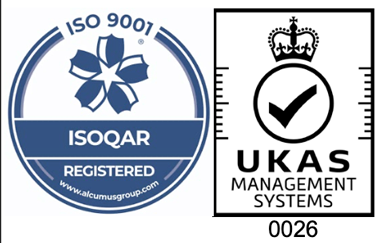Open Cell vs. Closed Cell Foam: What’s the Difference?
9th December, 2021
Whilst open cell foam and closed cell foam have different strengths and weaknesses, neither is better than the other. Instead, it is about assessing the properties of each foam against your project requirements. This guide will explore the properties of each foam type, discuss their benefits and drawbacks, their potential uses, and will compare the two against each other. So, keep reading to find out more about open cell and closed cell foams, and which is the best option for your needs.
Open Cell Foam
What properties does it have?
Open cell foam allows air to fill the material as it contains many open holes, meaning this material has a lower density and is cheaper to manufacture than closed cell foam.
When used overtime, open cells tend to have superior performance as they are less likely to be broken. Open cell foams typically have a lower density than closed cell foams. However, depending on the application, the composition of the open cell foam can be altered to increase the density.
What are the benefits of open cell foam?
Some key benefits of open cell foam include:
- It is ideal for reducing noise transmission and sound proofing.
- It can reduce dust and allergens, as foreign particles are trapped in its pore spaces. It is also resistant to mould growth.
- It is highly durable and will not diminish or shrink over time.
What can it be used for?
There a multitude of uses that open cell foam is effective for, including soundproofing in small spaces and for interior applications, such as roofing and wall lining.
Closed Cell Foam
What properties does it have?
In closed cell foam, as the name suggests, the holes within the material are closed off from each other. This results in a dense and more durable material that is full of tiny vacuums.
Typically, closed cells have a superior resistance to moisture than open cell foam, as they tend to be stiffer and more rigid. As a result, closed cell foams are effective when used in damp applications, including gasketing and insulation. Like open cell foam, the composition of closed cell foams can also be altered to change its density, compression resistance, rigidity, and more.
What are the benefits of closed cell foam?
The main benefits of closed cell foam include:
- Can be used in both exterior and interior environments, as it has high durability against heat and water. Closed cell has a superior moisture barrier and a high resistance to leakages.
- Can be helpful for increasing structural strength
- Can provide heat and sound insulation, due to closed off holes.
What can it be used for?
Closed cell foam is an effective option for a variety of applications, these include:
- Sound insulation in microphones and amplifiers – as they have a high resilience to vibrations.
- Exterior applications – due to closed cell foam having a high resistance to heat and water.
- Seals and wrapping – closed cell is a popular choice for pipe wrapping and sealing applications, as it has high levels of durability, density and rigidity.
- HVAC gaskets and insulation – this is because of the water-resistant properties of closed cell foams.
Open Cell vs. Closed Cell Foam
What are the similarities and differences?
Similarities
- Both foams are easily fabricated for creative, and DIY uses
- Open and closed cell foams are both known for their longevity and durability levels
- Both foams can be produced in sheets of varying thickness, densities, and sizes.
Differences
- Closed cell is suitable for indoor and outdoor uses, as it can be exposed to UV, CO2, and H2O, whereas open cell foam is damaged by these elements, and can only be used outside if it is covered.
- In comparison to open cell foam, which tends to be vulnerable to surface damage, closed cell foam is incredibly robust.
About Aquaseal
At Aquaseal we supply both open and closed cell foam to meet all your needs. If you want to find out which is better suited for your requirements, then please get in touch with our team of specialists today.


